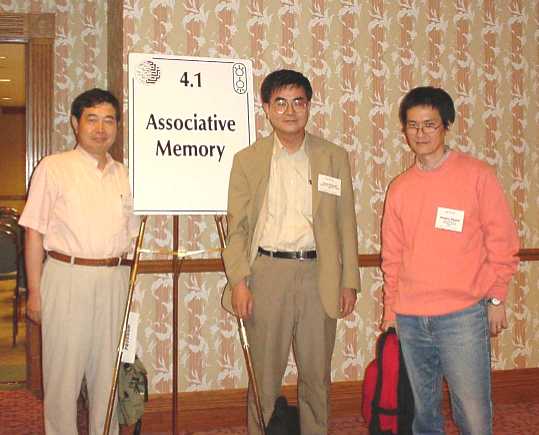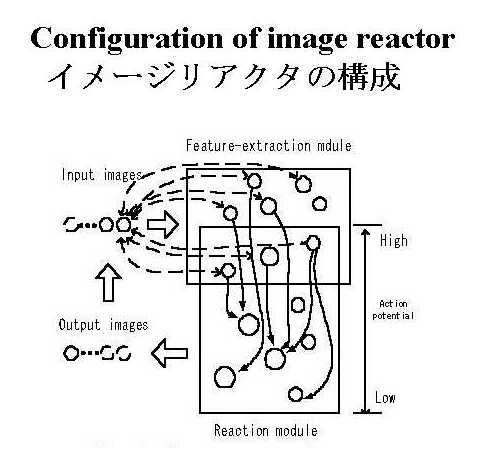IJCNN‘99 Washington DC
International Joint Conference on Neural Networks
 An Architecture for an Adaptive Associative Memory System
Based on Autonomous Reactions between Images
「イメージ間の自律的反応に基づく適応連想記憶システムの構築」
木ノ内康夫、水谷正大、稲林昌二
Yasuo Kinouchi*, Masahiro Mizutani*, and Shoji Inabayashi**
kinouchi@rsch.tuis.ac.jp, mizutani@rsch.tuis.ac.jp, and ina@sskco.co.jp
* Tokyo University of Information Sciences
** System Sogo Kaihatsu Co., Ltd.
Abstract
An Architecture for an Adaptive Associative Memory System
Based on Autonomous Reactions between Images
「イメージ間の自律的反応に基づく適応連想記憶システムの構築」
木ノ内康夫、水谷正大、稲林昌二
Yasuo Kinouchi*, Masahiro Mizutani*, and Shoji Inabayashi**
kinouchi@rsch.tuis.ac.jp, mizutani@rsch.tuis.ac.jp, and ina@sskco.co.jp
* Tokyo University of Information Sciences
** System Sogo Kaihatsu Co., Ltd.
Abstract
To construct a “thinking-like” processing system, an architecture of an adaptive associative memory system, which treats “images” as basic units of information, is proposed. This memory system adapts to an environment of the external world based on the autonomous reactions between the images and generated prototype images of the environment. It is a kind of neural-network made up of nodes and links, called a localist spreading-activation network. Each node holds one image locally. Images in high-activity nodes interact autonomously and generate new images and links. By this reaction between images, various forms of images are generated under constraints of links with adjacent nodes in the associative memory system.
「考えているように見える」処理系を構築するために、イメージを基本的な情報単位として取り扱う適応連想記憶システムを提案します。この記憶システムはイメージ間の自律的な反応に基づき、環境のプロトタイプイメージを生成することによって外界の環境に適応します。それは局所的興奮伝播ネットワークと呼ばれるノード群とリンクからなる一種のニューラルネットです。各ノードは局所的に1個のイメージを保持します。高い興奮状態のノードが自律的に相互作用し新しいイメージとリンクを生成します。このイメージ間の反応により、連想記憶システムの中の隣り合ったノードとのィンクの制約の下で、さまざまな形のイメージが生成されます。(以下省略)

